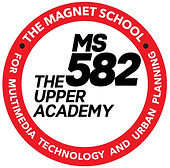PROJECT BASED LEARNING
Project-based learning is the instructional strategy of empowering learners to pursue content knowledge on their own and demonstrate their new understandings through a variety of presentation modes. Teachers can plan learning experiences that result in in-depth understanding of important ideas in the content. Because students are driving the learning, they can draw upon their strengths and create projects that incorporate their own interests, native language, cultural background, abilities and preference for using different types of media.

DIGITAL PHOTOGRAPHY
In this art unit, students will learn about digital photography. They will use digital cameras as a new medium as well as iphoto for editing. Students will learn the technical aspects of digital photography, as well as the conceptual. Photographs are used to tell a story; both when isolated and in a series.Therefore, students will learn how to tell a story using photo essays.

BOOM BOXES
AND
THE MUSICAL REVOLUTION
In this art unit, students will learn about the development of the musical culture within Brooklyn starting with the 1920’s until the 1990’s. Focus will be heavily on the creation of the boom box and the musical revolution generated by its creation. Students will also learn about the flow of electricity and circuitry.

THE
INCREDIBLE
MACHINE
In this art unit, students will invent a machine that is used to solve a problem they encounter in their everyday lives. Students will brainstorm in their groups to discover different problems they encounter throughout their day-to-day lives. Students will use this to help them create a machine to help solve their problem. Students will need to identify their target audience and learn how to gear promotion of their machine towards that audience. Students will learn about infomercials and how they are used to sell and promote a product.

TRASH
COLLECTOR
In this science unit, students will use their knowledge of the scientific method and complex machines to create a device that will help their community. Last year, 6th graders noticed that trash was a problem in the community. They decided to create trash collector devices to use in the school and community to try to solve this problem.

EARTHQUAKE RESISTANT BUILDINGS
In this science unit, students will explore concepts of architecture, engineering, and design in relation to cities, city planning, requirements and preparations needed for a city to function, and natural disasters, specifically earthquakes. Students will engage in the engineering design process to explore real world engineering problems and develop potential solutions to these problems.As a culminating project, students will design an earthquake resistant architectural structure taking into account concepts such as magnitude and Richter Scale.

NATIVE
AMERICAN
HOMES
In this social studies unit, students will learn about early civilization in America. They will learn about the geography of the settled land, climate conditions of the various regions, and the obstacles they encountered when arriving to America. The students will learn about the survival skills used in early civilizations of the Native Americans in North America and the citizens living in the thirteen colonies. Students will create models of a home that would be built by a Native American or a Colonist during that time period. Their designs should take into account geographical location, climate, available resources, and cultural influences.

COMMUNICATION AND MORSE CODE
In this social studies unit, students will learn that communication devices and morse code played another pivotal in expanding the direction of the war. Besides the physical casualties of the war, propaganda was used in all of the countries involved in WWI to share a message of advocating for the war. As a culminating task of this unit, students will create morse code devices to share a public service announcement while using propaganda images to convey a message to their classroom peers.

STOP ANIMATION
TRANSFORMATION
In this math unit, students will learn about the effects of transformations on pre-images and how transformations are used in real life to produce different visual representations. They will explore translations, reflections, rotations, and dilations. As a culminating task, students, will produce a digitally animated video using technology, animation, and the skills/concepts learned while studying transformations, congruence and similarity.

PUBLIC SERVICE ANNOUNCEMENTS
In this ELA unit, students will read books that deal with social issues. These social issues include bullying, LGBT rights, abuse, pollution, poverty, violence, bullying, divorce, etc. Students will choose one social issue they feel most connected to and create a Public Service Announcement in regards to their selected topic.

HEART DISSECTIONS
In this science unit, students will understand the cell, the function of organs, and how these work together as a system. Students must be able to explain and conclude that, despite changes, the connection of organ systems, and the maintenance of a proper metabolism, will provide a dynamic equilibrium for life.

DIGITAL PORTFOLIOS
In this art unit, students will design their digital portfolio using Wix, a website builder, in order to promote themselves and the work they created. Students will choose a template and begin building a webpage designed to contain their work from all content areas. This in an ongoing project that begins in the sixth grade and culminates at the end of eighth grade.

HYDOPONICS
AND THE
CULINARY ARTS
In this ELA unit, students will read books that deal with social issues. These social issues include bullying, LGBT rights, abuse, pollution, poverty, violence, bullying, divorce, etc. Students will choose one social issue they feel most connected to and create a Public Service Announcement in regards to their selected topic.

HYDOPONICS
AND THE
CULINARY ARTS
In this science unit, students will understand the cell, the function of organs, and how these work together as a system. Students must be able to explain and conclude that, despite changes, the connection of organ systems, and the maintenance of a proper metabolism, will provide a dynamic equilibrium for life.


